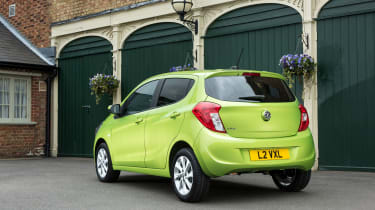Vauxhall Viva hatchback (2015-2019) - Engines, drive & performance
The Vauxhall Viva copes well with most driving situations but shines in the city
Small engines are usually at their best in town rather than on the open road. The Vauxhall Viva’s single petrol engine lives up to this, as the car is better at being a city runabout. Top gear in the five-speed gearbox is long, meaning the Viva’s engine doesn’t need to work quite as hard when driving at the motorway speed limit. The trade off is that you’re more likely to need a gearchange before overtaking or climbing a hill.
The Viva feels quite nippy when driving around urban areas and body lean is minimal. Vauxhall says the car’s suspension and steering have been tweaked to work better on bumpy UK roads and the ‘city steering’ function makes the wheel very light at low speeds. This all sounds good, but overall the Viva isn’t much fun to drive – the Hyundai i10 is much better in this department. Road and wind noise are both quite loud, especially at motorway speeds, but it’s by no means deafening.
An 18mm higher ride is the sole mechanical difference between the Rocks and other Viva models, and it makes no noticeable difference to the way the car drives. It does feel marginally more comfortable over bumps, though.
Vauxhall Viva petrol engine
There’s only one engine available for the Viva – a 1.0-litre petrol. It’s economical and is as capable on city streets and motorway stretches as you'd expect from a cheap city car.
The Viva’s 73bhp means it can manage a 0-62mph time of 13.1 seconds, which is almost two seconds quicker than a 1.0-litre version of the Hyundai i10 on paper. On the road, the amount of power is perfectly adequate for most situations.












